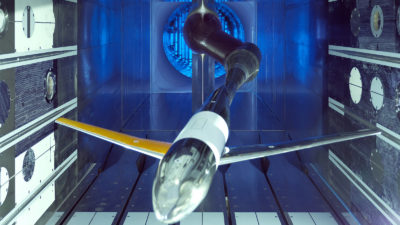Sending drones to disasters; making history on Mars
By Christoph Torens|December 2021
The Software Systems Technical Committee focuses on software engineering issues for complex and critical systems, including requirements, design, code, test, evaluation, operation and maintenance.
The German Aerospace Center, DLR, started the Drones4Good project in January with the United Nations, World Food Program, German Federal Agency for Technical Relief, International Search and Rescue Germany and the Netherlands-based Wings for Aid. The project will fly drones with artificial intelligence to deliver relief supplies in disasters. The goal is to process images in real time on board the drones to assess damage to buildings, scout supply routes and detect people on the ground. The drone could automatically drop supply packages if it detects a clear area and safe drop site.
In March, software for the F-35 Joint Strike Fighter program was delayed again. A report assessed that the goal for finalizing the modernization is not achievable. In its original development, the software was repeatedly delayed due to the unprecedented complexity. The current upgrade program is called Continuous Capability Development and Delivery, or C2D2, and began in 2019. The new delay does not show a positive trend, although C2D2 placed greater emphasis on agile software development to enable quicker releases.
The European Organization for Civil Aviation Equipment, or EuroCAE, published in April its first document regarding artificial intelligence. The statement of concerns covers challenges and a gap analysis regarding the use of AI in the safety critical aviation domain. Potential next steps and use cases are detailed. In the same month, the European Union Aviation Safety Agency, EASA, published the first regulatory guidance for machine learning applications. This document details objectives that must be fulfilled to ensure the safety of AI applications in aviation systems.
Also in April, NASA’s Ingenuity Mars Helicopter needed a software update before lifting off for its first flight on Mars. Ingenuity is a drone with a mass of 1.8 kilograms. The autonomous control software detected a problem during the spin-up test of its rotors. NASA issued a software fix that resolved a command sequence issue, and Ingenuity performed the first powered flight in the atmosphere of another planet.
EASA published a follow-up in May to its concept of design assurance for neural networks report. After the first report in 2020, the second version provided details on learning assurance, expandability and safety risk mitigation for AI applications. Additional standards organizations and regulatory bodies are working on similar guidance materials. These efforts indicate that regulatory bodies will eventually accept AI and autonomous software in general, even for safety-critical applications.
The International Space Station inadvertently moved off course in July after the new science module Nauka docked to it. The flight director of the Russian space agency, Vladimir Solovyov, said, “Due to a short-term software failure, a direct command was mistakenly implemented to turn on the module’s engines for withdrawal, which led to some modification of the orientation of the complex as a whole.” The software problem pushed the space station out of position for 47 minutes before a NASA ground crew fixed the problem.
Microsoft announced in August that it will incorporate the air taxi VoloCity, Germany-based Volocopter’s vision for urban air mobility, into the Microsoft Flight Simulator. The new capability will enable gamers and enthusiasts to experience personal air traffic and the future of urban air mobility, likely leading to a host of new ideas for developing and expanding the UAM sector.
Contributors: Stephen Blanchette and Chris Thames


































